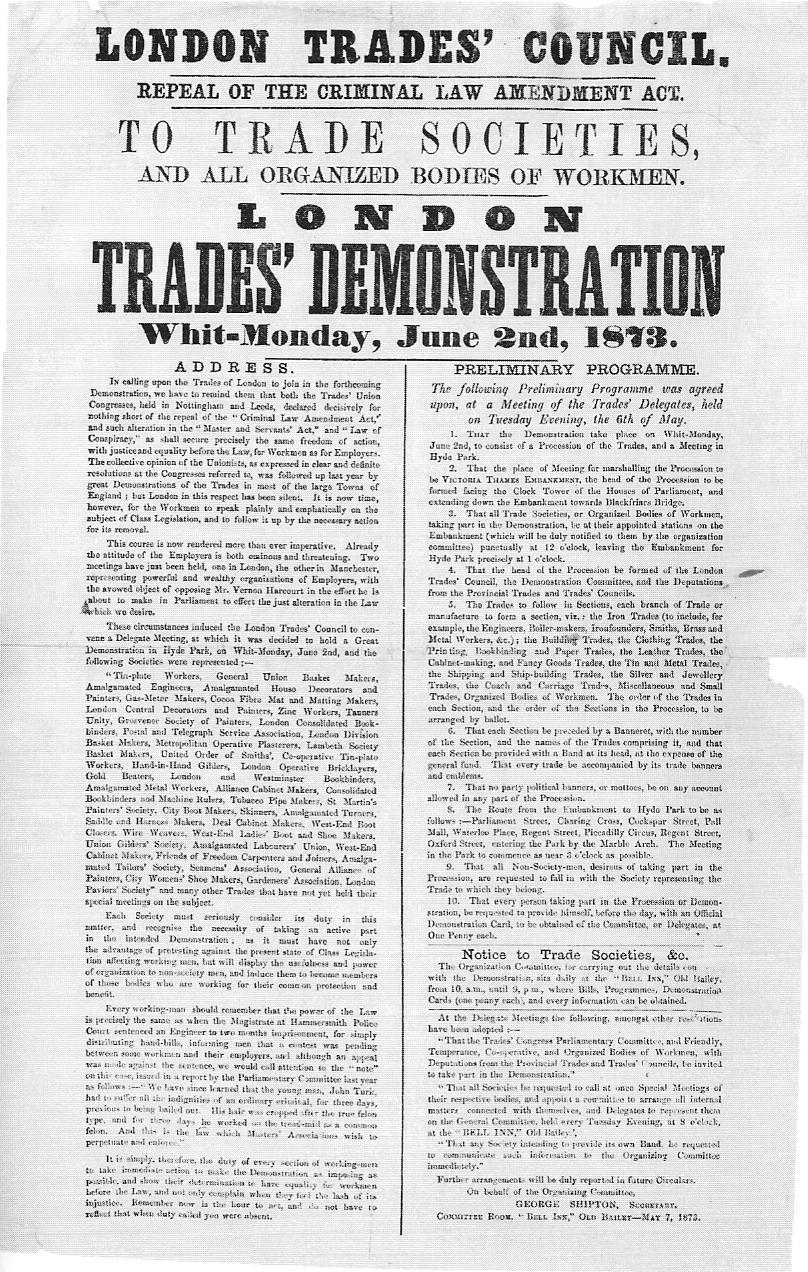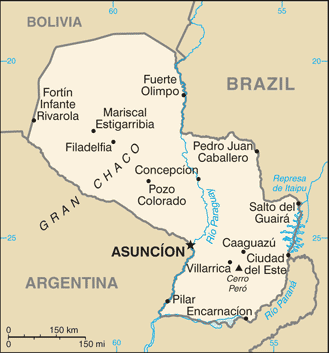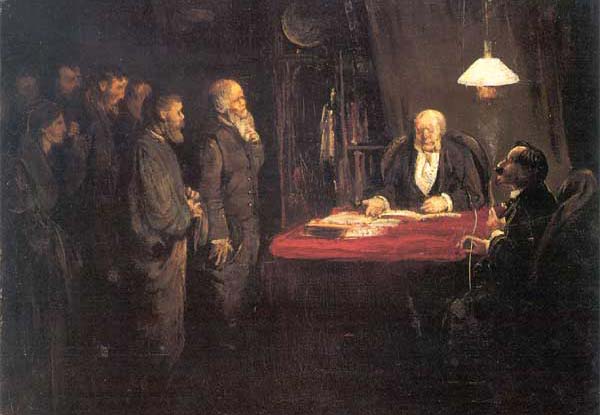|
Paraguayan Regional Workers' Federation
The Paraguayan Regional Workers' Federation (, FORP) was a Paraguayan trade union center. Established by anarcho-syndicalists in 1906, for a time, the FORP was the only trade union center in the country, organizing a series of strike actions in various different trades. During the Paraguayan Civil War of 1911–1912, the FORP was subjected to political repression and went into a decline, with some unions in the labor movement moving away from anarcho-syndicalism towards reformism. In 1916, the FORP was reorganized into the Regional Workers' Center of Paraguay (CORP), which continued to uphold its anarcho-syndicalist platform. Background After the Paraguayan defeat in the War of the Triple Alliance, which had caused a severe labor shortage in the country, the government of the Colorado Party introduced labor laws which bound workers to their jobs through a system of debt slavery. By the 1880s, Paraguayan workers began organizing themselves into benefit societies, the first wor ... [...More Info...] [...Related Items...] OR: [Wikipedia] [Google] [Baidu] |
Regional Workers' Center Of Paraguay
The Regional Workers' Center of Paraguay (; CORP) was a Paraguayan anarcho-syndicalist trade union center. Founded in 1916, as the successor to the Paraguayan Regional Workers' Federation (FORP), the CORP organised workers throughout the country, at a time when the Paraguayan export market was flourishing. It led several strike actions by workers on the Asunción tram network, culminating in a general strike in 1921. It also participated in the founding of the Continental American Workers' Association (ACAT), together with other Latin American anarcho-syndicalist federations. By the late 1920s, the CORP started losing influence to socialist and communist-led trade unions. The CORP dissolved during the Chaco War, with some of its members joining the ranks of the Paraguayan Communist Party (PCP). Establishment The Paraguayan labor movement was founded during the late 19th century, with the country's first trade unions being established during the first years of the 1900s. The fi ... [...More Info...] [...Related Items...] OR: [Wikipedia] [Google] [Baidu] |
Trade Union
A trade union (British English) or labor union (American English), often simply referred to as a union, is an organization of workers whose purpose is to maintain or improve the conditions of their employment, such as attaining better wages and Employee benefits, benefits, improving Work (human activity), working conditions, improving safety standards, establishing complaint procedures, developing rules governing status of employees (rules governing promotions, just-cause conditions for termination) and protecting and increasing the bargaining power of workers. Trade unions typically fund their head office and legal team functions through regularly imposed fees called ''union dues''. The union representatives in the workforce are usually made up of workplace volunteers who are often appointed by members through internal democratic elections. The trade union, through an elected leadership and bargaining committee, bargains with the employer on behalf of its members, known as t ... [...More Info...] [...Related Items...] OR: [Wikipedia] [Google] [Baidu] |
History Of Paraguay
The history of Paraguay encompasses thousands of years of human habitation. Both agricultural and nomadic Guaycuruan lived in the region at the time of the Spanish Conquest. It became a relatively neglected part of the Spanish Empire due to its isolation and lack of mineral wealth, nonetheless a small group of Spanish settlers came to reside in the area, increasingly intermarrying with native women to produce a mestizo population. In the 17th and 18th centuries, Jesuit missionaries organized the natives into planned communities known as reducciones, and the experiment gained notable attention in Enlightenment Era Europe. In the early nineteenth century, Paraguay participated in the uprisings across the Spanish Empire against Spanish rule, and newly independent Paraguay came under the domination of Jose Gaspar Rodriguez de Francia, who in his absolute rule almost entirely cut off the new nation from the world. After Dr. Francia's death in 1840, Paraguay eventually came ... [...More Info...] [...Related Items...] OR: [Wikipedia] [Google] [Baidu] |
Liberal Party (Paraguay)
The Liberal Party (), commonly known as the Blue Party (), Nohlen, D (2005) ''Elections in the Americas: A data handbook, Volume II'', p413 was a political party in Paraguay, ruling the country for most of the period between 1904 and 1940. The party won the 1928 elections, the first fair and free elections in Paraguay history. History The party was established in 1887 to represent the interests of landowners and middle class merchants.Nohlen, p414 The Colorado Party was established in the same year and was dominant until the Liberal Revolution in 1904, after which the Liberal Party remained in government for almost the entire period until 1940. The party was dissolved by Higinio Morinigo in 1942,Nohlen, p428 and by the end of the 1947 revolution the Colorado Party was the only one left in the country.Nohlen, p415 The Liberal Party continued to exist abroad and in 1963 the Renewal Group faction returned to the country to become the "official" opposition to the Stroessner reg ... [...More Info...] [...Related Items...] OR: [Wikipedia] [Google] [Baidu] |
Anarchism In Italy
Italian anarchism as a movement began primarily from the influence of Mikhail Bakunin, Giuseppe Fanelli, Carlo Cafiero, and Errico Malatesta. Rooted in collectivist anarchism and social or socialist anarchism, it expanded to include illegalist individualist anarchism, mutualism, anarcho-syndicalism, and especially anarcho-communism. In fact, anarcho-communism first fully formed into its modern strain within the Italian section of the First International.Nunzio Pernicone, ''Italian Anarchism 1864–1892'', pp. 111–113, AK Press 2009. Italian anarchism and Italian anarchists participated in the '' biennio rosso'' and survived Italian Fascism, with Italian anarchists significantly contributing to the Italian Resistance Movement. Platformism' ... [...More Info...] [...Related Items...] OR: [Wikipedia] [Google] [Baidu] |
Anarchism In Paraguay
Anarchism in Paraguay has held influence among the urban and rural working classes since the end of the 19th century. Its main figure was the writer and journalist Rafael Barrett. Beginnings The anarchists were active in the graphic, railway and baker's unions as early as 1889, organizing the fight for the 8-hour workday. On March 1 of that year, the railway workers declared a strike of significant proportions, other guilds soon followed. On May 21, 1892, the first libertarian manifesto was published, edited by the group "Los Hijos del Chaco": they declared themselves anarcho-communist and intended to abolish private property, the clergy, the State and the armed forces. At the same time, several libertarian unions were organized, particularly among carpenters. In 1900, the Italian anarchist Pietro Gori, temporarily based in Argentina, drafted the statute of the bricklayers union. The carpenters eventually achieved the 8-hour day in 1901, after a week on strike.Cappelletti, An ... [...More Info...] [...Related Items...] OR: [Wikipedia] [Google] [Baidu] |
Recession
In economics, a recession is a business cycle contraction that occurs when there is a period of broad decline in economic activity. Recessions generally occur when there is a widespread drop in spending (an adverse demand shock). This may be triggered by various events, such as a financial crisis, an external trade shock, an adverse supply shock, the bursting of an economic bubble, or a large-scale Anthropogenic hazard, anthropogenic or natural disaster (e.g. a pandemic). There is no official definition of a recession, according to the International Monetary Fund, IMF. In the United States, a recession is defined as "a significant decline in economic activity spread across the market, lasting more than a few months, normally visible in real GDP, real income, employment, industrial production, and wholesale-retail sales." The European Union has adopted a similar definition. In the United Kingdom and Canada, a recession is defined as negative economic growth for two consecutive qu ... [...More Info...] [...Related Items...] OR: [Wikipedia] [Google] [Baidu] |
Baring Crisis
The Baring crisis or the Panic of 1890 was an acute recession in the United States. Although less serious than other panics of the era, it is the 19th century’s most famous sovereign debt crisis, and the 17th largest decline in U.S. stock market history. Background The crisis was precipitated by the near insolvency of Barings Bank in London. Barings, led by Edward Baring, 1st Baron Revelstoke, faced bankruptcy in November 1890 due mainly to excessive risk-taking on poor investments in Argentina. Argentina itself suffered severely in the recession of 1890 with its real GDP falling by 11 percent between 1890 and 1891. An international consortium assembled by William Lidderdale, governor of the Bank of England, including Rothschilds and most of the other major London banks, created a fund to guarantee Barings' debts, thereby averting a larger depression. Nathan Rothschild remarked that if this had not happened, perhaps the entire private banking system of London would have coll ... [...More Info...] [...Related Items...] OR: [Wikipedia] [Google] [Baidu] |
Eight-hour Day
The eight-hour day movement (also known as the 40-hour week movement or the short-time movement) was a social movement to regulate the length of a working day, preventing excesses and abuses of working time. The modern movement originated in the Industrial Revolution in Britain, where industrial production in large factories transformed working life. At that time, the working day could range from 10 to 16 hours, the work week was typically six days, and child labour was common. Since the 19th century, the eight-hour workday has been gradually adopted in various countries and industries, with widespread adoption occurring in the first half of the 20th century. History Sixteenth century In 1594, Philip II of Spain established an eight-hour work day for the construction workers in the American Viceroyalties by a royal edict known as '' Ordenanzas de Felipe II'', or Ordinances of Philip II. This established: An exception was applied to mine workers, whose work day was limi ... [...More Info...] [...Related Items...] OR: [Wikipedia] [Google] [Baidu] |
Strike Action
Strike action, also called labor strike, labour strike in British English, or simply strike, is a work stoppage caused by the mass refusal of employees to Working class, work. A strike usually takes place in response to employee grievances. Strikes became common during the Industrial Revolution, when Labour economics, mass labor became important in factories and mines. As striking became a more common practice, governments were often pushed to act (either by private business or by union workers). When government intervention occurred, it was rarely neutral or amicable. Early strikes were often deemed unlawful conspiracies or anti-competitive cartel action and many were subject to massive legal repression by state police, federal military power, and federal courts. Many Western nations legalized striking under certain conditions in the late 19th and early 20th centuries. Strikes are sometimes used to pressure governments to change policies. Occasionally, strikes destabilize the r ... [...More Info...] [...Related Items...] OR: [Wikipedia] [Google] [Baidu] |
Baker
A baker is a tradesperson who baking, bakes and sometimes Sales, sells breads and other products made of flour by using an oven or other concentrated heat source. The place where a baker works is called a bakery. History Ancient history Since grains have been a staple food for millennia, the activity of baking is a very old one. Control of yeast, however, is relatively recent.Wayne Gisslen, ''Professional Baking'' (4th ed.: John Wiley & Sons, 2005), p. 4. By the fifth and sixth centuries BCE, the Ancient Greek civilization, ancient Greeks used enclosed ovens heated by wood fires; communities usually baked bread in a large communal oven. Greeks baked dozens and possibly hundreds of types of bread; Athenaeus described seventy-two varieties. In ancient Rome several centuries later, the first mass production of breads occurred, and "the baking profession can be said to have started at that time." Ancient Roman bakers used honey and Cooking oil, oil in their products, creat ... [...More Info...] [...Related Items...] OR: [Wikipedia] [Google] [Baidu] |
Postal Worker
A postal worker is one who works for a post office, such as a mail carrier. In the U.S., postal workers are represented by the National Association of Letter Carriers, AFL–CIO, National Postal Mail Handlers Union – NPMHU, the National Association of Rural Letter Carriers and the American Postal Workers Union, part of the AFL–CIO. In Canada, they are represented by the Canadian Union of Postal Workers and in the United Kingdom by the Communication Workers Union. The US Postal Service employs around 584,000 people. The bulk of these work as: *Service clerks – Sell stamps and postage, help people pick up packages and assist with other services such as passports. * Mail sorters – ... [...More Info...] [...Related Items...] OR: [Wikipedia] [Google] [Baidu] |






